EVENT
Otsuchi Festival 2023.09.15-17
- 2023
- Sightseeing Tours
- suggested-route
- Appreciation
-
Date
2023.9/15(Fri.)・16(Sat)・17日(Sun)
-
Time
9/15(Fri)|Dedicated Dance for the God in Otsuchi Inari Shrine Yoimiya Matsuri (small festival held the night before a full festival) 17:30~20:30
16(Sat)|Otsuchi Inari Shrine Mikoshi-togyo (procession of portable shrine) 7:20~18:20
Dedicated Dance for the God in Kozuchi Shrine Yoimiya Matsuri (small festival held the night before a full festival) 17:00~20:30
17(Sun)|Kozuchi Shrine Mikoshi-togyo (procession of portable shrine) 8:30~17:00
-
Locate
-
Fee
free
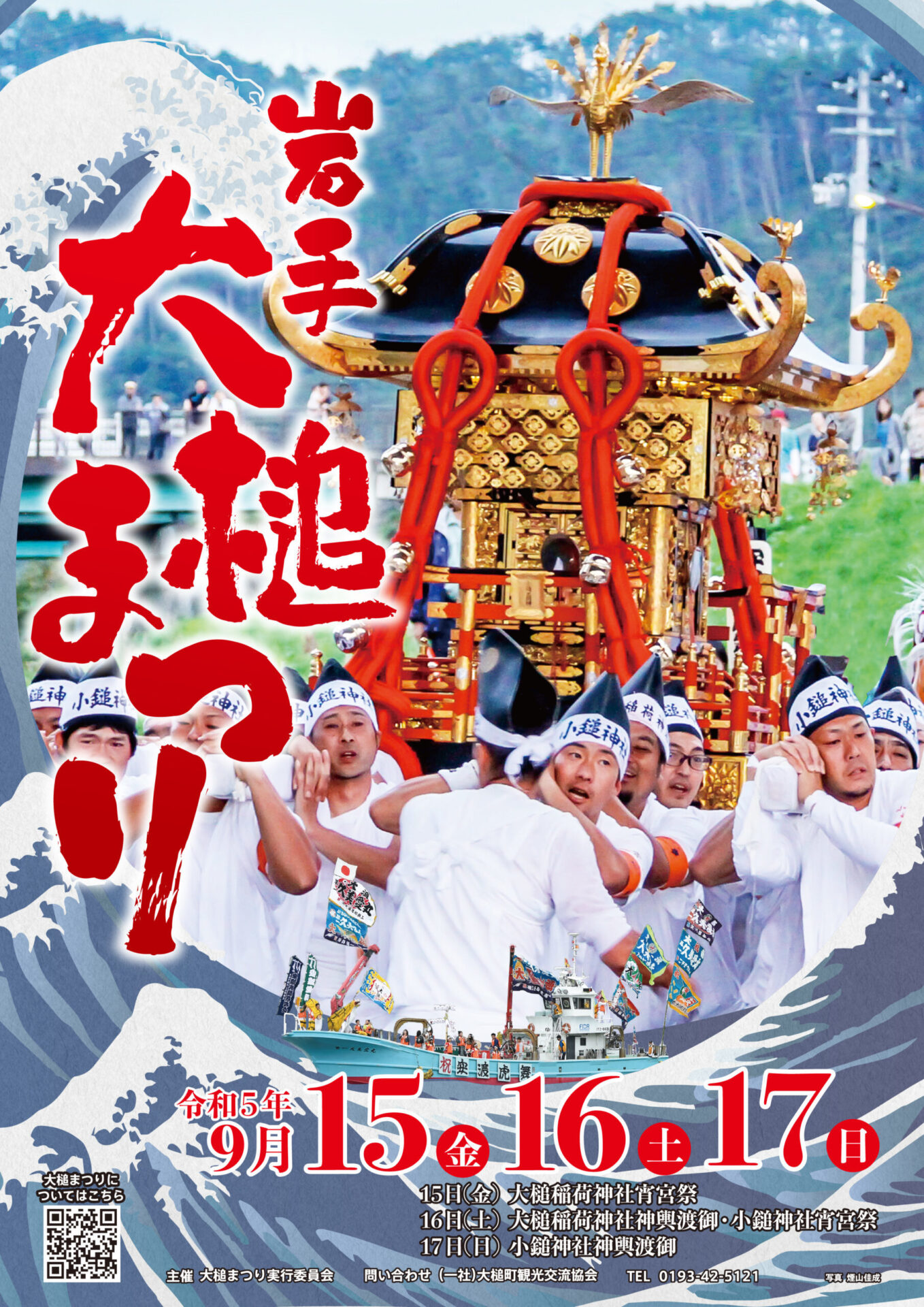
The grand festivals of Otsuchi Inari Shrine and Kozuchi Shrine are held together. Features the Mikoshi-togyo, along with local traditional performing arts groups such as Daikagura, Shishiodori, Toramai, and Shichifukujin, as well as dancing groups from each district, parading through the town and creating a lively atmosphere.
Highlight
This year, on September 16th (Saturday), the Otsuchi River Mikoshi-togyo will be held for the first time in 13 years. On September 17th (Sunday), the usual Kozuchi River procession of mikoshi will take place.
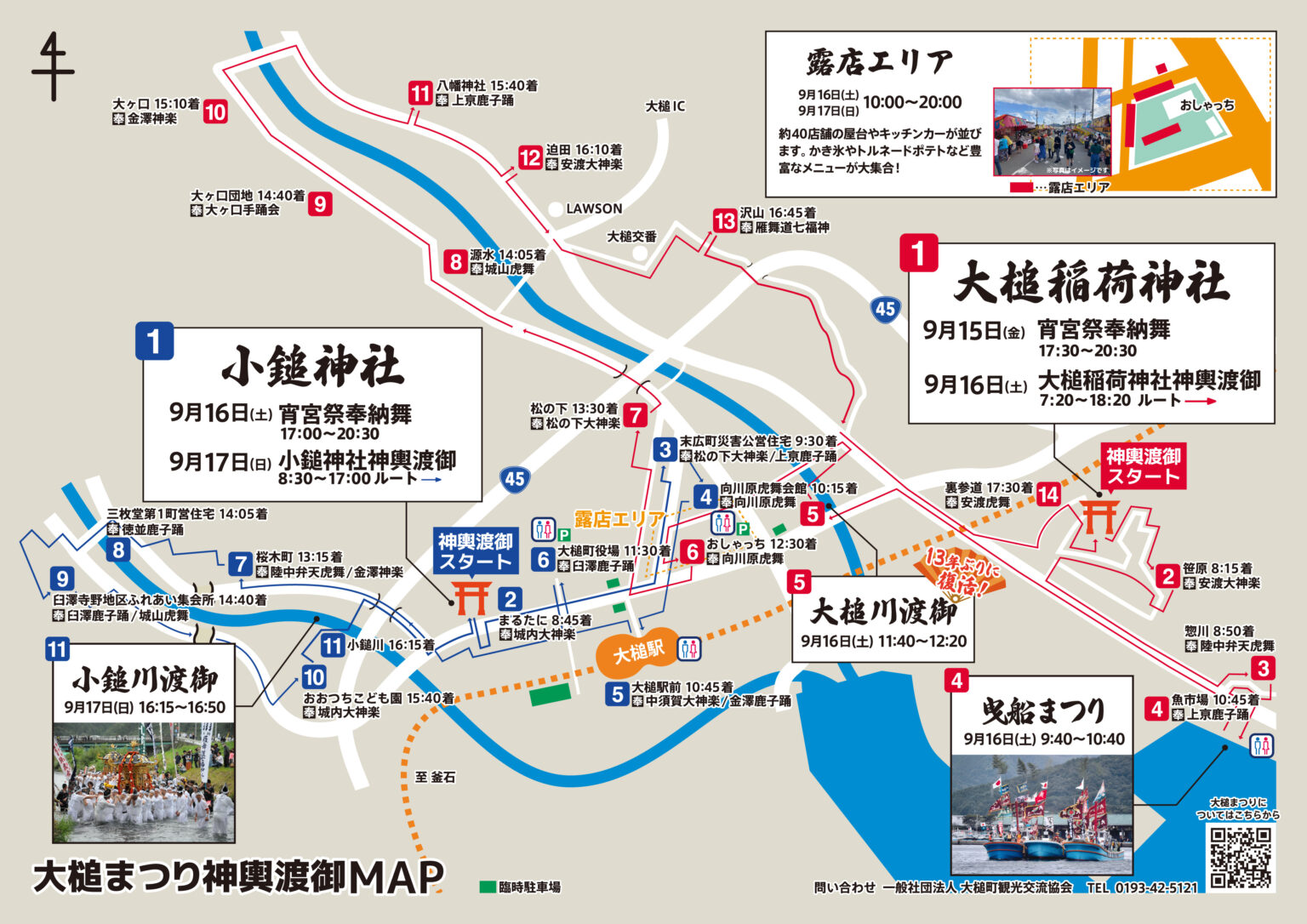
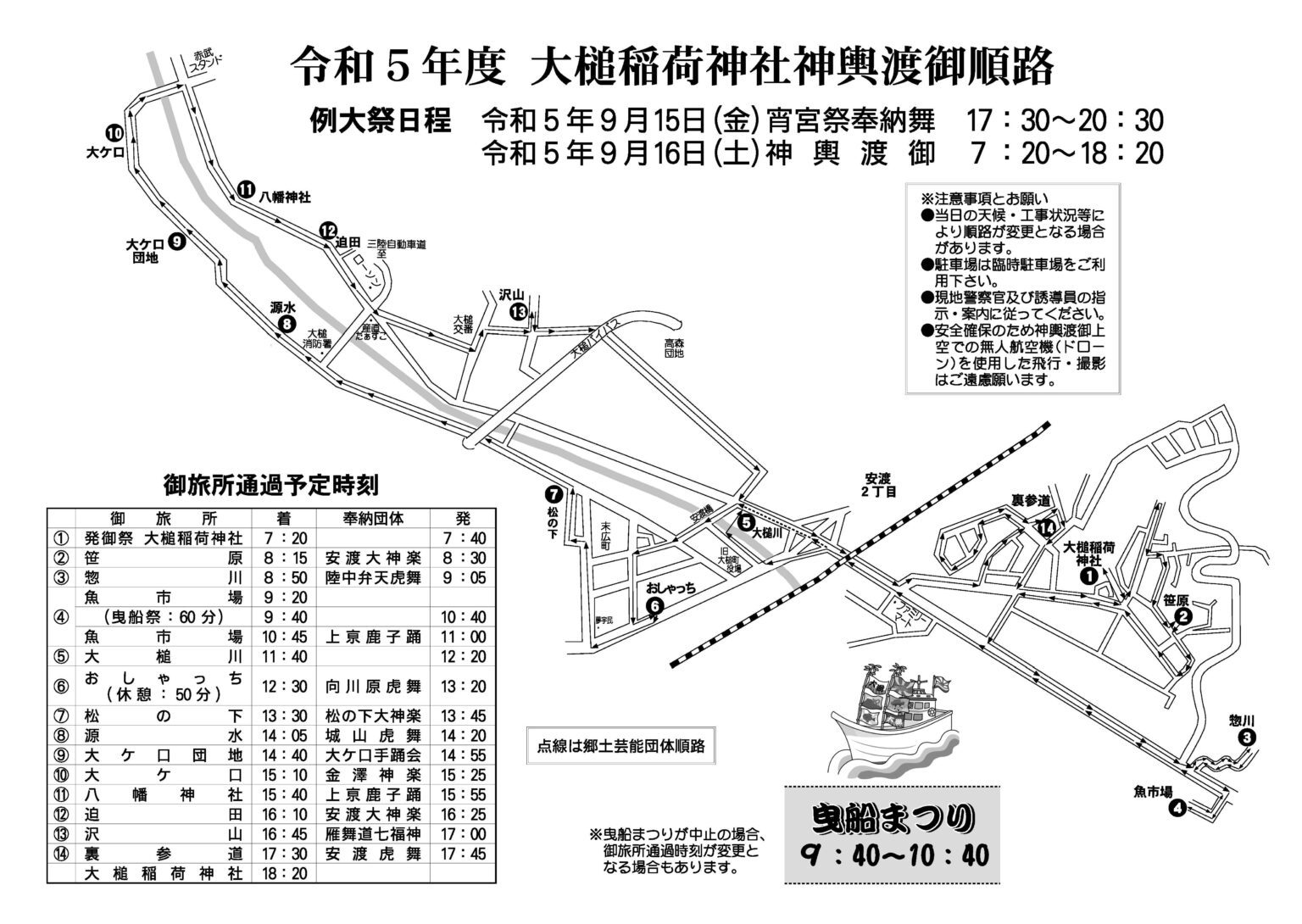
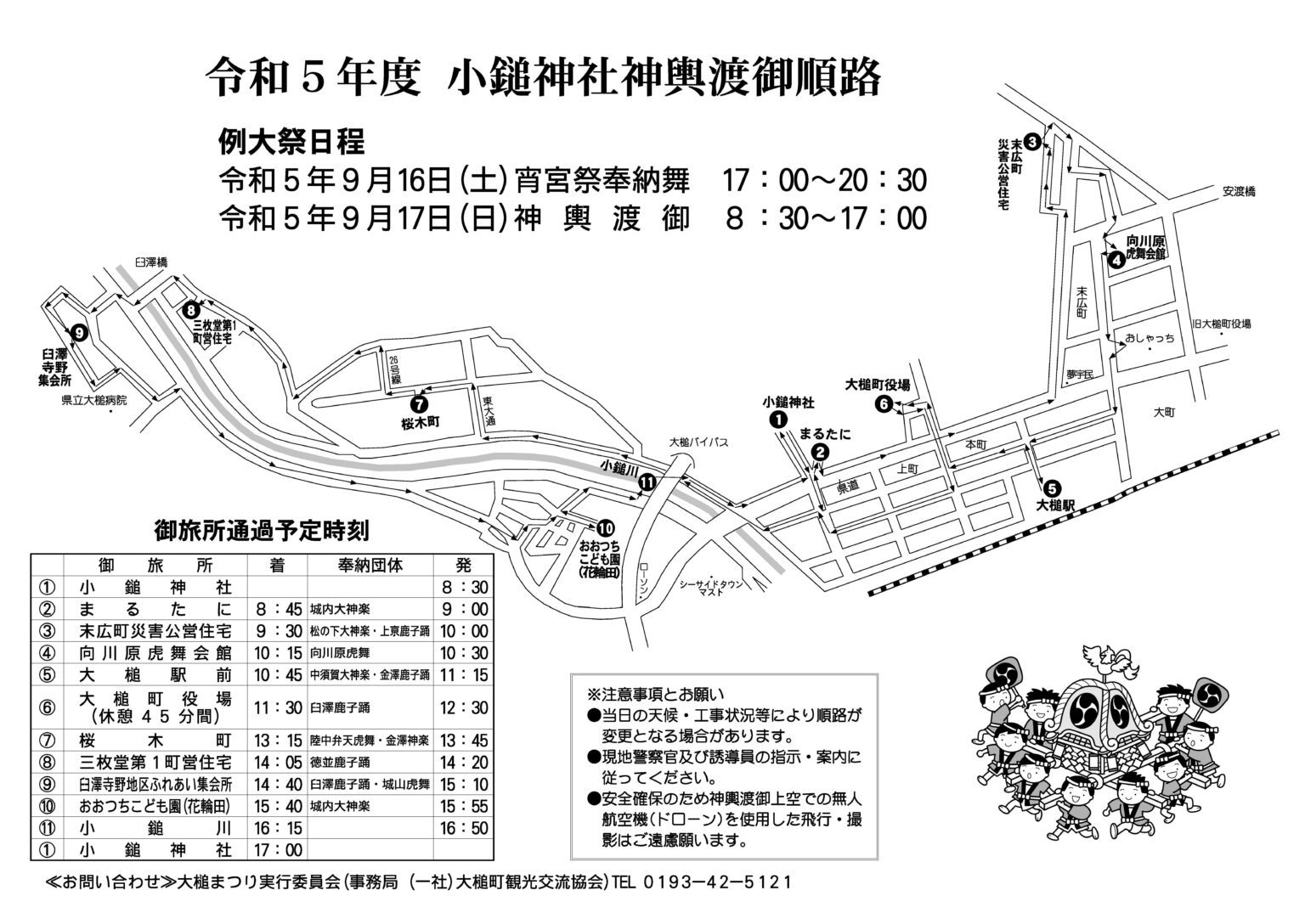
access
| Time | Schedule | note |
|---|---|---|
| By Train | ||
| 07:16 | TokyoーShinhanamaki(09:50) | Tohoku Shinkansen HAYABUSA101 |
| 09:57 | ShinhanamakiーKamaishi(12:07) | JR Kamaishi Line |
| 12:18 | Kamaishi-Otsuchi(12:35) | Sanriku Railway Rias Line |
| By car(rental car) | ||
| 10:36 | TokyoーShinhanamaki(13:41) | Tohoku Shinkansen YAMABIKO57 |
| 14:00 | ShinhanamakiーOtsuchi(15:30) | rental car(Shinhanamki) |
click here for more information https://www.town.otsuchi.iwate.jp/gyosei/en/#access
Travel information
Chari Café
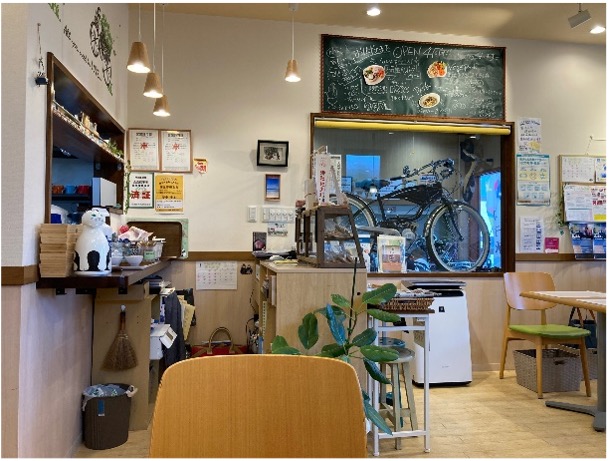
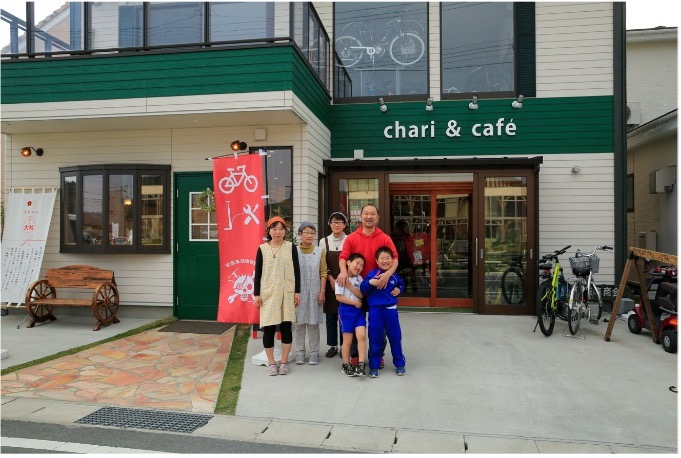
Located opposite Oshacchi (Otsuchi Cultural Exchange Center), this local well-known establishment combines a bicycle shop with a café.
The bicycle division of Chari Café, Uchikanezaki Jitensha Shokai, is an old-established shop that celebrated its 100th anniversary in 2022.
Their original store and residence were completely destroyed by the tsunami during the Great East Japan Earthquake, forcing them to resume business in a temporary shopping street after the disaster, but in 2018, they opened as the first bicycle-shop café in the Prefecture. The café features a warm, Western-style ambiance, offering both coffee and lunch options.
It will operate in front of its store on the day of the Otsuchi Festival. (An exclusive festival menu will be offered)
Chari Café
12-14 Suehiro-cho, Otsuchi Town, Iwate 028-1111
TEL|0193-27-5888
Horaijima Island (Hyotanjima))
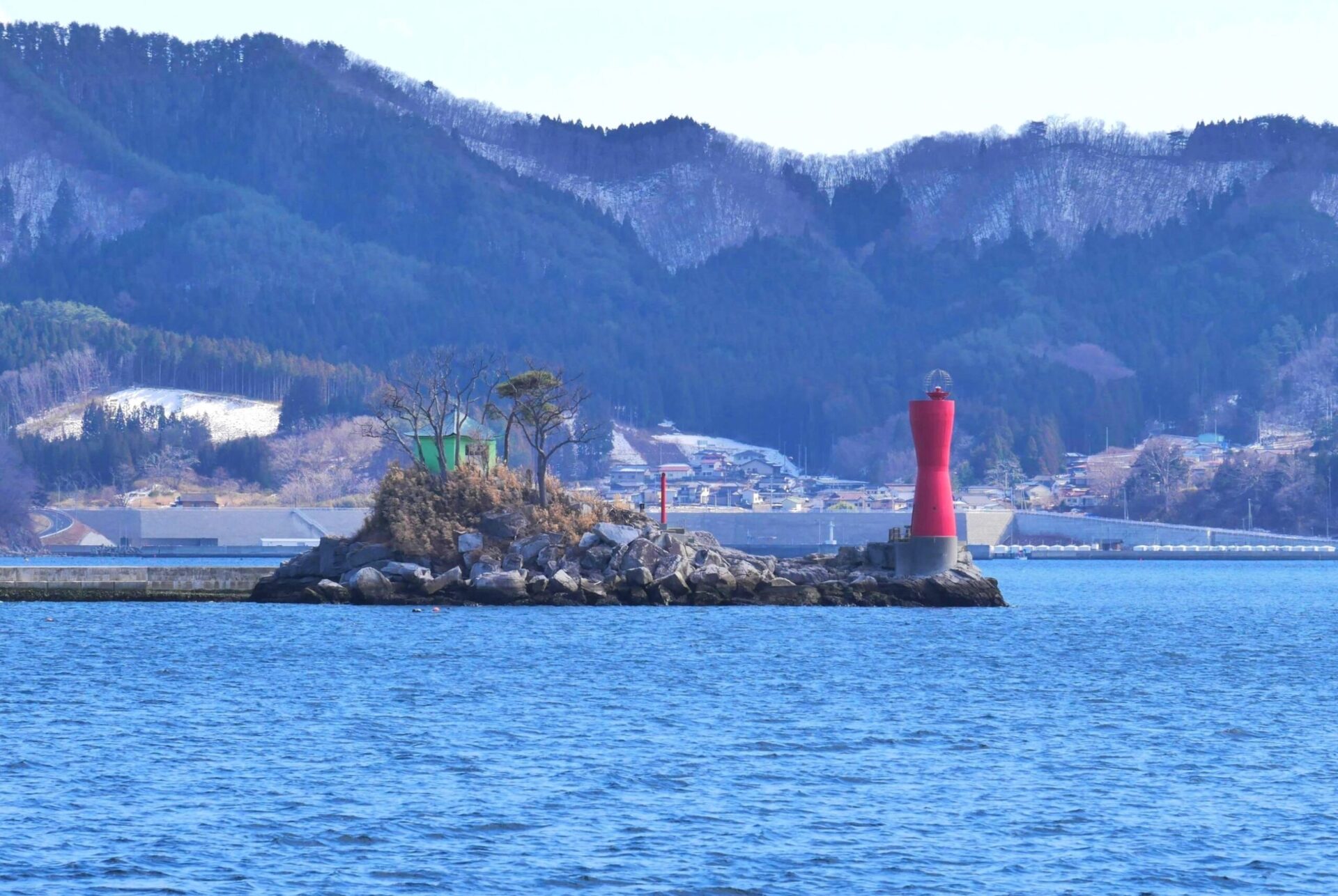
An island located within Otsuchi Bay in Otsuchi Town. This island, measuring about 200 meters in circumference, is characterized by the presence of two connected hills, both big and small, and is affectionately known as Hyotanjima (Gourd Island).
On the island stands the Benten Shrine, where the statue of Benzaiten is enshrined. It has long been revered as a guardian deity for abundant fishing and safe navigation. And in 1953, a lighthouse was also installed on the island, becoming an indispensable aid for ships navigating the vicinity. Although the lighthouse was destroyed by the Great East Japan Earthquake and Tsunami, the hall housing the statue of Benzaiten remained intact. The lighthouse was later rebuilt, and the island was designated as a cultural heritage site (scenic spot) by Otsuchi Town in August 2013, symbolizing the Town’s recovery.
The island is connected to the mainland by a pier, allowing visitors to walk across.
Otsuchi Tourism Exchange Association
34-4 Shin-cho, Otsuchi Town, Iwate 028-1111
TEL|0193-42-5121
Click here for other tourist information https://www.town.otsuchi.iwate.jp/gyosei/en/
Areas
Artists
-
Ando Daikagura
It is said that Ichibe Kanezaki and Matasuke Miyazawa learned this kagura from “Shichikencho of Morioka”, a performing arts group serving for the Nambu domain, and passed it on to the townspeople under the orders of the deputy governor of Otsuchi during the Edo period. In the Meiji era, the festival was held only in years of good harvests, which created a period of decline, but it has been handed down to this day because of the strong enthusiasm of the predecessors. The group consists of Ando area adults and children, and the lion used is called, “Osu”, which means “male” in Japanese, and dances in a heroic manner. Most were swept away by the tsunami in the Great East Japan Earthquake, but thanks to the efforts of those involved and support for the recovery of the traditional performing arts, the group has resumed its activities.
-
Ando Toramai
It is said that the Ando Toramai was handed down from Osawa in Yamada Town, to Katagishi in Kamaishi City, and was taught by the toramai group from Katagishi during the Tempo era (1830-1844). In 1990, an organization was formed to preserve the dance, and the entire community came together to pass it on to the next generation, teaching the children of Ando Elementary School and other local students. In the Great East Japan Earthquake, the members of the preservation society were affected, and all of their equipment and costumes were lost. With the hope of revitalizing the community through the recovery of their toramai, they received support for the restoration of the folk performing arts, and by the end of the year, had costumes and other equipment back in order.
-
Usuzawa Shishiodori Preservation Society
Allegedly there used to be a form of dance which had been conveyed by a sailor from Boshu (the tip of Boso peninsula, current Chiba prefecture) during the Genroku era (1688-1704). Today’s Usuzawa Shishiodori is said to have originated from the dance in Boshu which the villagers of Otsuchi learned during their travel to the Kashima Shrine in the Tenmei era (1781-1789). Today, they dedicate the dance at Otsuchi Festival of the Kozuchi Shrine and join the procession of mikoshi (a portable shrine) as its advance unit, dedicating the dance at stations of mikoshi and visiting houses for ritual. The dance is also dedicated at the festival of a branch shrine of the Kozuchi Shrine in Usuzawa community. Although the number of households in Usuzawa community is limited, all of them are contributing to the Preservation Society. It includes some members visiting from other communities. The dance is intense and wild with swinging hair-like ribbons called kan’nagara, made of shaved Japanese wood pulp.
-
Kanezawa Kagura Preservation Society
Kanezawa Kagura is a yamabushi (mountain ascetic hermit)-type kagura, inherited in Kanezawa district of Otsuchi City since around 1815. It has been popular for a long time as a dedication during festivals, Buddhist rituals, and private yado-kagura (touring kagura). This kagura has been served for the Otsuchi Inari Shrine since 1945 and had many activities at Kanezawa district festivals and on their winter tours.
-
Kanezawa Shishiodori
It is said to have originated in the middle of the Edo period (about 300 years ago) when a woman who married a landlord in the Kanezawa area from Moichi (present-day Moichi of Miyako City) invited a shishi odori master from Moichi to teach the dance to the local young people. From the latter half of the Meiji era to the Taisho era, the dance was handed down to the Taima district of Kanezawa, and in 1970, a preservation society was formed and has continued to this day. In addition to dedicating the dance at the Kanezawa Inari Shrine Festival to pray for a good harvest and safety, and also at the shin-bon houses (first obon following a death of a family member) as a memorial, the group also participates in the Otsuchi Festival. The dance is currently being handed down to the children of the village. The dance is different from the other four groups in the town.
-
Kamiyo Shishiodori
The dance is said to have been handed down from about 300 years ago, when a man born in Boshu (present-day Chiba Prefecture) taught the shishi odori to the young people in Kuribayashi Sawada of Kamaishi, spreading out to the Kamiyo area. It is also called “Boshu Odori,” and it is presumed that the present dance was formed by fusing with the nembutsu odori that was originally handed down locally. One of the features of this dance is that they always sing a praise before dancing: praising the gate, the tatami room, and the inns that they stayed at. The dance is performed at the festivals of Otsuchi Inari Shrine, Kozuchi Shrine, the local Wano Daimyojin Shrine, Hachiman Shrine, and at Buddhist memorial services.
-
Ganmaidou Shichifukujin
The shichifukujin dance performed in Ofunato was brought to Sanriku Town in the early Taisho era. Later, the person who brought the shichifukujin to Sanriku Town moved to Kamaishi, and taught the dance to the children at the request of the Higashimae Youth Association, which is said to be the beginning of the Higashimae Shichifukujin. In 1953, the Ganmaido Shichifukujin invited an instructor from Higashimae at the request of the local youth association, and learned this dance. The dance was originally meant to dance in tatami rooms, but it was arranged to a fast tempo ohayashi music, with a dance that is mainly passed down to elementary school boys, contributing to the development of the youth.
-
Shiroyama Toramai
In 1996, a group of young people from the town began performing under the guidance of the Osaki Town Toramai of Kamaishi City. Since 2002, the group has been based in the prosperous Sukacho area, but was damaged by the tsunami that followed the Great East Japan Earthquake. Most of the toramai groups in Otsuchi were damaged by the tsunami and lost their bases of activity, but by April 2011, they began to share their remaining equipment to perform for the victims of the tsunami as a collective “Otsuchi Toramai” group. At the same time, they went to various parts of Japan and overseas to perform in appreciation of the great support they had received, expressing our gratitude and pledges for recovery.
-
Jonai Daikagura
There is a theory that Jonai Daikagura started when the yamabushi mountain ascetics brought Daikagura (a type of shishimai) from the Ise school, to Shichimyojin in Rikuchuhei as and acting “Daikagura” when Kozuchi Shrine was relocated to its present location during the Kan’ei era (1624-1645). It is also said that they learned it from Shichikencho (near Senboku Town of Morioka) at the recommendation of a local official. The performance is almost the same as other daikagura performances in the town, but it is characterized by the quiet and elegant dance of the “female” lion. They accompany the procession of mikoshi at the festival of Kozuchi Shrine and perform kado-uchi (dancing around the houses). The festival was devastated by the Great East Japan Earthquake, but with support, the yatai and costumes were restored to their current state.
-
Nakasuka Daikagura
Nakasuka Daikagura originated in the late Edo period, and was organized in the early Meiji period. The Nakasuka area, where this tradition is carried on, is adjacent to the Satomiya of Kozuchi Shrine. The tsunami that hit the town in the Great East Japan Earthquake completely destroyed houses in the area, and all tools, costumes, and festival floats, including the lion’s head, were swept away. Most of the performers had to move to temporary housing outside the town, and it was feared that the tradition would not be able to continue, but thanks to support for the reconstruction of the folk performing arts and the enthusiasm of the performers, the tradition has resumed. The lion’s head has no fangs, and is said to be female. Its facial expression is soft and gentle. The lion has a single tooth in the center of its head, and its teeth are arranged on both sides.
-
Mukaigawara Toramai
It was first introduced in 1948 as part of the activities of the youth association in the Mukaigawara area, with the aim of promoting healthy development through local performing arts. Initially, they were taught by a master from Kirikiri, Otsuchi Town, and adopted the role of “Watonai”, where it chases the tiger away. A few years later, the group were taught the dance and ohayashi music of a toramai group in Kamaishi through an exchange, which resulted in its current form. There was a time that a shortage of successors were feared, but the toramai group in Kamaishi taught the dance again to revitalize it. The group was then affected by the tsunami in 2011, but thanks to reconstruction support and the enthusiasm of its members, they were able to overcome this challenge and continue their activities.
-
Matsunoshita Daikagura
As with other Daikagura in the town, legend has it that it originated with the performers from Morioka Shichikencho. During the Edo period, a performer from Morioka Shichikencho moved to Mukaigawara in Otsuchi with one of the three lion heads (made by Koun, named Tsuruchiyo) given to him by the lord of the Nambu domain, and the deputy governor of Otsuchi at the time took him under his wing, though there are no records that remain. In the Showa period, the number of successors to the Mukaikawahara Daikagura dwindled, so it was taken over by volunteers from the nearby Matsunoshita area, and the name was changed to Matsunoshita Daikagura in 1962. The lion’s head, equipment, etc. were damaged in the Great East Japan Earthquake, but have been revived with the help of reconstruction support.
-
Rikuchu Benten Toramai
In 1974, more than a dozen young people from the Akahama area formed the group as the Akahama Toramai. In 1981, an ofuda (talisman) from the Grand Shrine in Watonai, and an item related to Zenbe Kirikiri (a merchant for the Nambu Clan who used Kirikiri as his base) were delivered to the Benten Shrine, which was enshrined on Horai Island in Otsuchi Bay. This was when the group name was changed to “Rikuchu Benten Toramai”. In addition to the traditional dance, they also create and perform their own unique dance style. They have danced for dedication to the Otsuchi Inari Shrine, Kozuchi Shrine, Akahama Hachiman Shrine, and Benten Shrine. The Akahama area was devastated by the tsunami, with their equipment washed away, but overcame the challenge, now resuming its activities and playing an active role in festivals and events.
Contact
Sanriku International Arts Festival 2023
-JAPAN CULTURAL EXPO 2.0
Organized by|Sanriku International Arts Committee, Japan Arts Council, and Agency for Cultural Affairs, Government of Japan

Co-organized by|Hachinohe City, Hashikami Town, Hirono Town, Kuji City, Noda Village, Fudai Village, Tanohata Village, Iwaizumi Town, Miyako City, Yamada Town, Otsuchi Town, Kamaishi City, Ofunato City, Rikuzentakata City, Sumita Town, Sanriku Railway Co., Ltd., Japan Folk Performing Arts Association, NPO Iwate Arts Support Center, and NPO Japan Contemporary Dance Network
Cooperated by|NPO Michinoku Trail Club, imajimu LLC, Tohoku Cultural Property Video Research Institute, Minna no Shirushi LLC